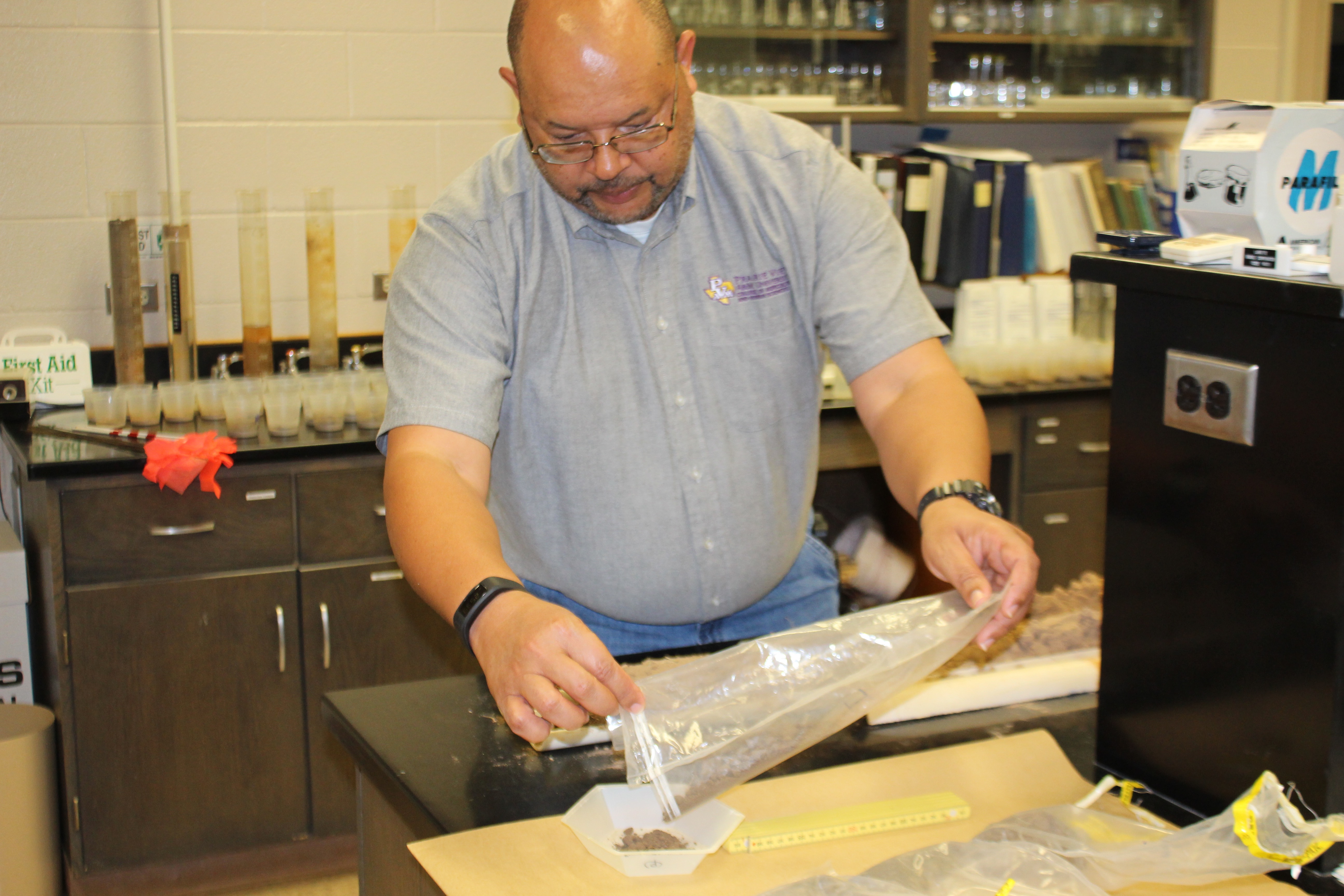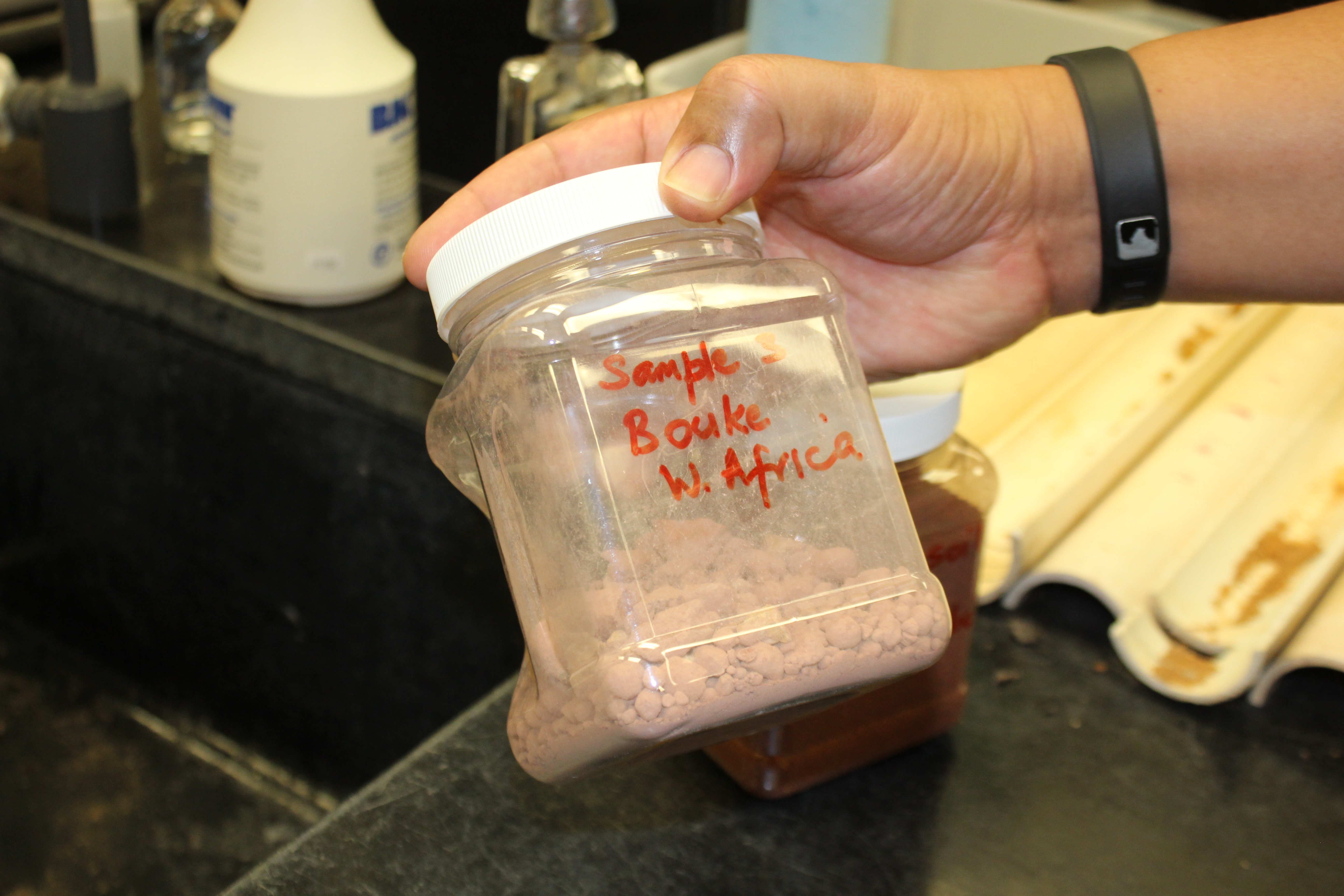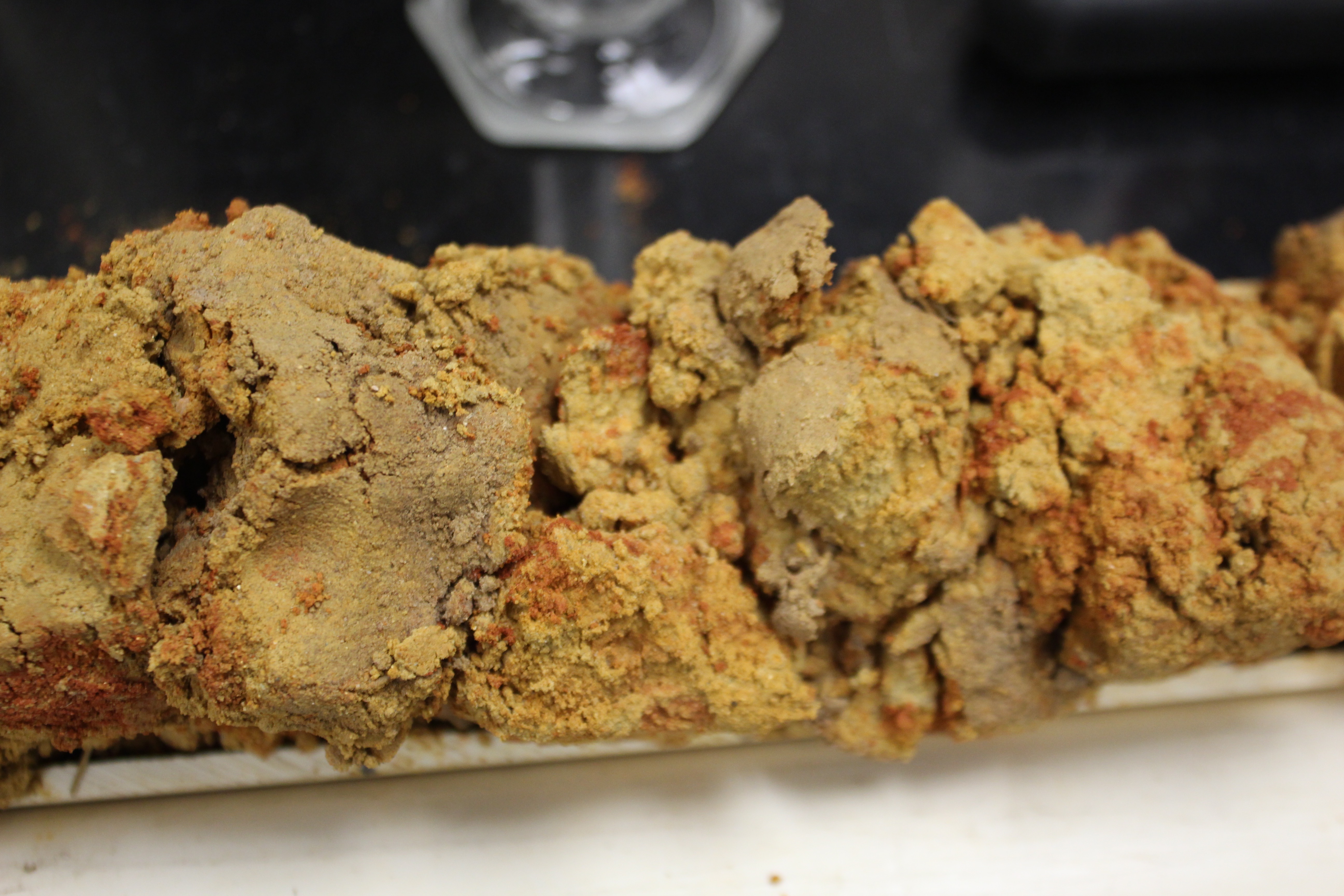A conversation with Dr. Richard Griffin can give you a whole new way of thinking about dust, and not the kind you sweep and remove from homes, apartments and offices. Specifically, Dr. Griffin studies the red dust of West Africa that can carry toxins while travel-ing right across the Atlantic Ocean in the high winds of storms and hurricanes.
 A professor and research scientist for Prairie View A&M University’s College of Agriculture and Human Sciences, Griffin has been leading the Saharan and Sahelian Red Dust Collection Project (SSRDCP) for more than a decade. The work is supported by the USDA National Insti-tute of Food and Agriculture, Evans-Allen 1890 Research Formula Program.
A professor and research scientist for Prairie View A&M University’s College of Agriculture and Human Sciences, Griffin has been leading the Saharan and Sahelian Red Dust Collection Project (SSRDCP) for more than a decade. The work is supported by the USDA National Insti-tute of Food and Agriculture, Evans-Allen 1890 Research Formula Program.
Griffin and other researchers involved in SSRDCP want to know whether the red-col-ored soils found on PVAMU’s Governor Bill and Vara Daniel University Farm actually originated in the Saharan or Sahelian regions of Africa.
At one time, scientists assumed toxic microor-ganisms could not survive while being carried in the wind for thousands of miles. That assump-tion has proven invalid now that deadly toxins have been found to travel all the way from the West African nation of Mali to the northwestern region of Texas.
In the late 1990s, the National Oceanic and Atmospheric Administration (NOAA) began plac-ing dust traps in various states along the U.S. Gulf Coast — with the westernmost dust traps having been placed in the city of Lubbock, Texas.
“From the traps in Lubbock, researchers col-lected the dust and were able to conduct genetic sequencing,” Griffin says. “There are microbic libraries from samples taken around the world. By knowing the DNA-RNA of those microbes, researchers can match them back to their original location.
“In Lubbock, there is a set of microorganisms that were growing on the surface of the dust particles, and that set of microbes matched the microbes that live in the open sewers of Mali,” Griffin says.
WHY IT MATTERS:
The E. Coli Threat and Other Dangers
Griffin notes that during dry periods in Mali’s climate, open sewer ditches dry up and pro-duce a biofilm — called a “scum layer” — on the surface of sewage. This scum layer dries out, breaks apart and its dust particles gather in the wind.
When the wind blows in a western direction, Griffin says, it gathers the scum layer dust, carries it 25,000 feet into the air, and brings it all the way to the Western Hemisphere — including the United States.
“We think of E. Coli as being one of the microor-ganisms that is associated with raw, untreated sewage,” Griffin observes.
According to the Centers for Disease Control and Prevention (CDC), there are many strains of the bacteria, Escherichia coli (E. coli). Most strains are harmless and live in the intestines of healthy humans and animals. But some E. coli strains are well-known and feared for causing disease by producing Shiga toxin.
Although the research conducted by Griffin and the SSRDCP is ongoing, the professor says many signs lead to the conclusion that the red dust found on PVAMU’s Daniel Farm comes directly from Africa. For example, according to experts on the King Ranch in South Texas, pas-ture-dwelling egrets — often called “cattle egrets” — were literally carried from West Africa to the South Texas coast during a powerful hurricane in 1899, Griffin says, and those egrets became the ancestors of the entire egret population currently found throughout North America.
Griffin asserts that if a flock of egrets can be carried in high winds across the Atlantic Ocean, toxic dust particles can also be transported.
“This means we not only have a bio-environ-mental issue, in terms of these particles travel-ing and us breathing them in, there is also a bio-medical issue,” Griffin says. “As these waves of dust particles come in, the hospitals have to be ready with the right medical supplies and have staff prepared to treat individuals who will suffer during upper respiratory alerts. “Anyone with upper respiratory ailments and allergies is breathing in these microorganisms constantly,” adds Griffin, “because there is dust in the air that never comes down.”
Griffin also notes another indication that the African red dust is definitely present is the color found in some of the soil around the PVAMU campus. “Our soils that exist on the campus are reddish-brown sands, when, in actuality, they should be tan-colored,” he says. “They should not be red.” Other indications of African red dust being present in North America are found in the Caribbean islands, says Griffin. “The reason that the Bahamas actually exist is because of the African red dust.
“When the dust blows from the African continent to the West, it falls into the ocean and feeds microorganisms known as stromatolites that consume the dust, use its iron and that has built up a core structure as a base for the islands.”
“If you look at all of the other island structures, there’s either volcanic ash or some kind of fault, or bedrock under them,” Griffin contin-ues. “The Bahamas do not have bedrock,” he says. “They literally are built up from the sea, and it’s the dust that fell into the sea that fed the microorganisms, and their bodies became large enough to act as whole colonies that they now are the structure of the islands.”
“Someday, there will be a dust alert just to let individuals know that this (dust storm) is com-ing. Therefore, hospitals and others will have to decide how they are going to manage their workload,” he says.
On a closely related issue involving toxic air, Griffin notes that when sugar cane fields in Mexico are burned, the smoke blows north into the United States. Griffin notes dichloro-diphenyl-trichloroethane (DDT) is still used by Mexican farmers to burn cane fields — while DDT usage over U.S. sugar cane fields is now illegal. But winds tinged with DDT still regularly blow into the U.S. from Mexico. “By using DDT, which attaches to plants and soil particles, adds Griffin, “you have the heat that rises and brings plant material that’s been burned and soil particles, because they’ve now cleared the earth and the dust particles go up in that same plume.”
As a result, in recent years there have been suc-cessive waves of toxic air alerts for people who have upper respiratory illnesses — from north of the U.S.-Mexico border all the way to the Dallas-Fort Worth area, Griffin says, adding that there has to be a continued and more intensi-fied global movement advocating preventive measures against both the spread of red dust and various pesticide usage.
“If we don’t have any programs in place to address issues outside the United States, at some point, we will suffer the consequences of what arrives in the atmosphere,” he says. “We don’t have any way to keep the dust from get-ting here, so if we address it where it originates, then we’re better off here, at the end point.”

